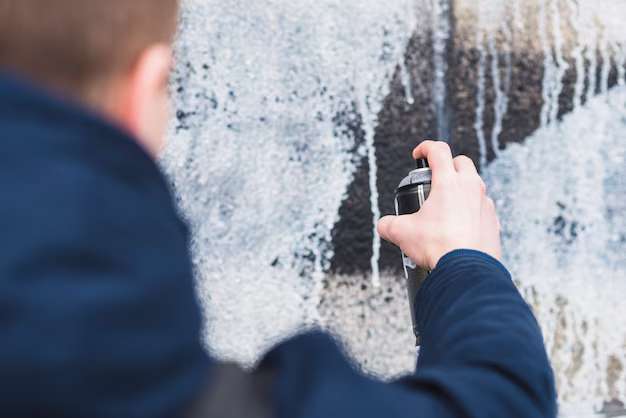Why Is There Water Under My Refrigerator? Uncovering the Mystery and Finding Solutions
Walking into your kitchen to find a pool of water under your refrigerator can be a frustrating and perplexing experience. This common problem could result from various issues, each requiring a unique solution. Whether you're dealing with a minor nuisance or a potential hazard, understanding why water collects under your refrigerator and knowing how to address it can save you time, worry, and perhaps a costly repair bill.
Common Causes of Water Under Your Refrigerator
1. Clogged Defrost Drain
One of the most common reasons you might find water under your refrigerator is a clogged defrost drain. Modern refrigerators usually come equipped with a mechanism to self-defrost, melting the frost that accumulates in the freezer. This excess water typically travels down a defrost drain to a pan located under the appliance, where it eventually evaporates.
How It Happens: Over time, food particles and other debris can clog the defrost drain, causing water to back up and spill out onto your kitchen floor.
What to Do: Clear the blockage using warm water or a pipe cleaner. Regular maintenance can prevent future clogs.
2. Leaky Water Line
If you have a refrigerator with a built-in ice or water dispenser, a potential culprit could be a leak in the water line.
Signs to Watch For: You may notice water pooling more rapidly if this is the cause.
Fixing the Issue: Inspect the connections between the water supply and the refrigerator. Tighten any loose fittings or replace faulty tubing.
3. Damaged Drain Pan
A cracked or damaged drain pan can lead to water leaking onto your floor.
Spot the Problem: Check the drain pan located at the bottom of the refrigerator. If it’s damaged, water won’t properly collect and evaporate.
Solution: Replace the drain pan to ensure it functions correctly.
4. Improper Fridge Leveling
An uneven refrigerator might cause water overflow.
Investigate This: Check to see if your fridge is level. It should tilt slightly back, allowing water in the defrost drain to flow correctly.
Correction Steps: Adjust the leveling legs or feet to correct the alignment.
5. Faulty Door Gaskets
Old or degraded door seals can let warm air into your refrigerator, leading to excessive condensation.
Symptoms: Increased frost buildup inside the freezer or refrigerator.
Resolution: Replace any worn or damaged gaskets to ensure proper sealing.
Solutions and Preventive Measures
Understanding the underlying issue is just the beginning. Implement these solutions and proactive tips to tackle water problems and prevent their recurrence.
Basic Troubleshooting Steps
- Inspect Regularly: Regular visual inspections can help you catch leaks early.
- Keep Clean: A clean defrost drain will prevent many water-related issues.
- Ensure Proper Ventilation: Make sure there is enough clearance around your refrigerator for ventilation to facilitate evaporation.
How to Level Your Refrigerator
- Find the Leg Adjusters: Often found at the front base of the appliance.
- Adjust Accordingly: Use a wrench to raise or lower the legs.
- Test the Level: Use a bubble level to confirm the refrigerator is slightly tilted back.
Extend Fridge Life with Routine Maintenance
Keeping your refrigerator in peak condition involves more than just addressing water issues. Regular maintenance can extend the life of your appliance and improve its efficiency.
Regular Cleaning
- Interior Cleaning: Clear expired items and wipe down shelves with a mild detergent.
- Exterior Cleaning: Clean coils and vents to ensure efficient operation.
Optimal Operating Temperatures
- Refrigerator Compartment: Maintain a temperature of around 37°F (about 3°C).
- Freezer Compartment: Aim for 0°F (-18°C).
Quick Summary of Key Actions 📝
- 🧹 Clean: Regularly clean the defrost drain.
- 🔍 Inspect: Check the water line for leaks.
- 💡 Level It: Use a bubble level to ensure proper fridge alignment.
- 🛠 Repair or Replace: Fix or change damaged drain pans and gaskets.
- 🍎 Organize: Regularly clear and clean the fridge interior to boost efficiency.
Understanding Fridge Technologies
Modern Fridge Features That Help
- Frost-Free Freezers: These freezers come with automatic defrost cycles, reducing the risk of water pooling issues.
- Humidity-Controlled Drawers: Enhance produce storage while minimizing extra moisture.
Future Trends to Watch 👍
The appliance industry constantly evolves with innovations designed to improve user experiences and reduce maintenance hassles.
- Smart Technology: Smart fridges can alert you to potential issues, such as water leaks.
- Eco-Friendly Designs: Enhancements aimed at energy efficiency might also improve condensation management.
When to Call a Technician
Despite the best efforts, sometimes professional help is necessary. Recognize when a situation might be out of your hands.
Situations Requiring Expert Assessment
- Recurring Water Issues: Continuous problems despite troubleshooting.
- Complex Repairs: Issues involving electrical components or significant dismantling.
- Warranty Considerations: Always respect warranty guidelines to keep your coverage valid.
Avoiding Future Fridge Woes
A small issue today can grow into a costly problem tomorrow if ignored or improperly addressed. Taking the time to understand potential causes and implement preventive measures can stave off future inconveniences.
Tips for Ongoing Maintenance 📆
- 🕒 Set Regular Reminders: Schedule maintenance checks every 3-6 months.
- 🌬 Improve Kitchen Ventilation: Ensure sufficient air circulation around the fridge.
- 🌿 Eco-Conscious Appliance Choices: Consider newer models designed with moisture management in mind.
By understanding these common causes and solutions, you can effectively manage and prevent water from pooling under your refrigerator. Whether it's a quick DIY fix or knowing when to seek professional help, these insights empower you to maintain your kitchen's cornerstone appliance efficiently. Remember, early detection and regular maintenance are keys to preventing small leaks from becoming big headaches.
